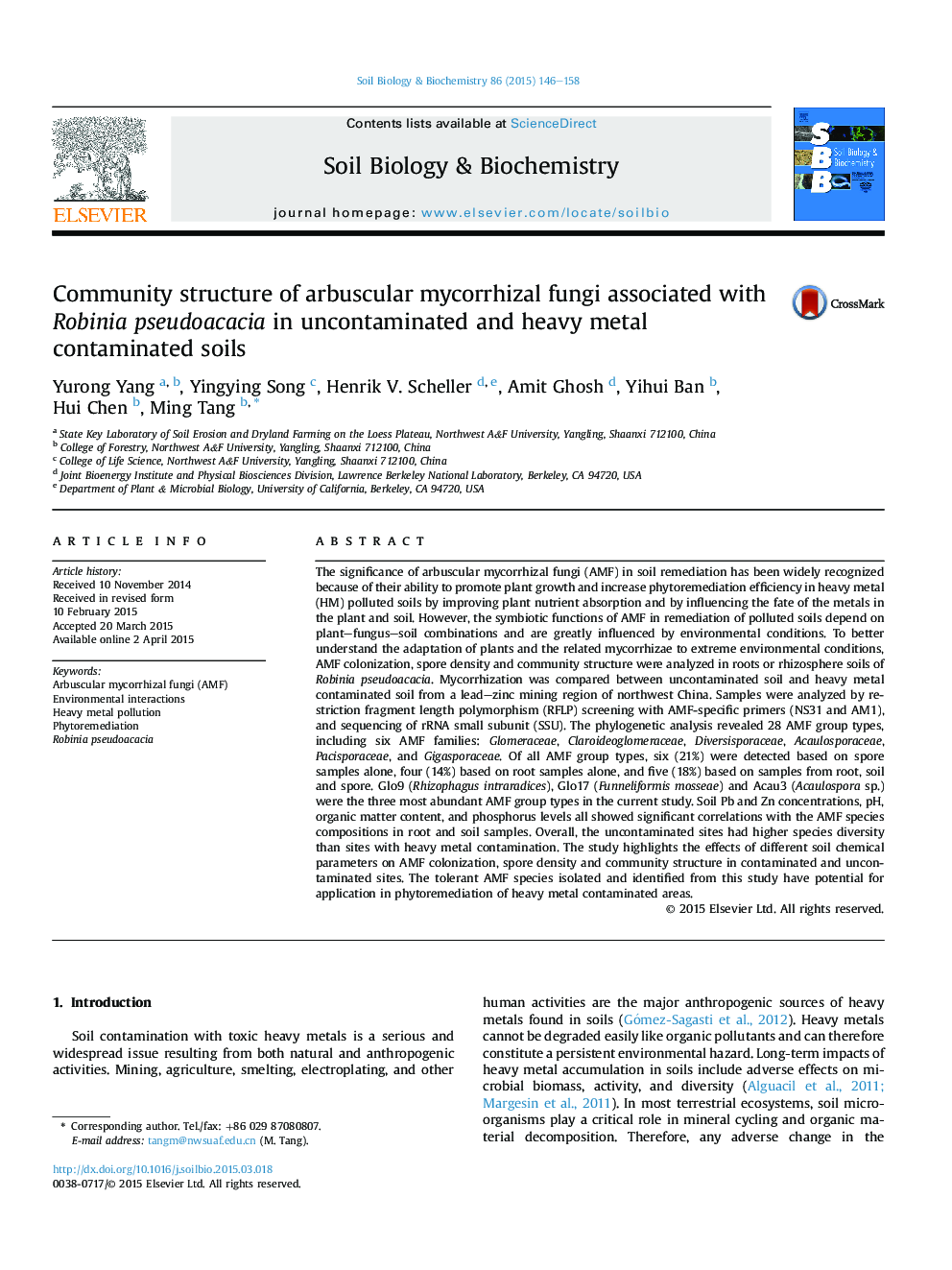| کد مقاله | کد نشریه | سال انتشار | مقاله انگلیسی | نسخه تمام متن |
|---|---|---|---|---|
| 2024530 | 1542598 | 2015 | 13 صفحه PDF | دانلود رایگان |
عنوان انگلیسی مقاله ISI
Community structure of arbuscular mycorrhizal fungi associated with Robinia pseudoacacia in uncontaminated and heavy metal contaminated soils
دانلود مقاله + سفارش ترجمه
دانلود مقاله ISI انگلیسی
رایگان برای ایرانیان
کلمات کلیدی
موضوعات مرتبط
علوم زیستی و بیوفناوری
علوم کشاورزی و بیولوژیک
دانش خاک شناسی
پیش نمایش صفحه اول مقاله

چکیده انگلیسی
The significance of arbuscular mycorrhizal fungi (AMF) in soil remediation has been widely recognized because of their ability to promote plant growth and increase phytoremediation efficiency in heavy metal (HM) polluted soils by improving plant nutrient absorption and by influencing the fate of the metals in the plant and soil. However, the symbiotic functions of AMF in remediation of polluted soils depend on plant-fungus-soil combinations and are greatly influenced by environmental conditions. To better understand the adaptation of plants and the related mycorrhizae to extreme environmental conditions, AMF colonization, spore density and community structure were analyzed in roots or rhizosphere soils of Robinia pseudoacacia. Mycorrhization was compared between uncontaminated soil and heavy metal contaminated soil from a lead-zinc mining region of northwest China. Samples were analyzed by restriction fragment length polymorphism (RFLP) screening with AMF-specific primers (NS31 and AM1), and sequencing of rRNA small subunit (SSU). The phylogenetic analysis revealed 28 AMF group types, including six AMF families: Glomeraceae, Claroideoglomeraceae, Diversisporaceae, Acaulosporaceae, Pacisporaceae, and Gigasporaceae. Of all AMF group types, six (21%) were detected based on spore samples alone, four (14%) based on root samples alone, and five (18%) based on samples from root, soil and spore. Glo9 (Rhizophagus intraradices), Glo17 (Funneliformis mosseae) and Acau3 (Acaulospora sp.) were the three most abundant AMF group types in the current study. Soil Pb and Zn concentrations, pH, organic matter content, and phosphorus levels all showed significant correlations with the AMF species compositions in root and soil samples. Overall, the uncontaminated sites had higher species diversity than sites with heavy metal contamination. The study highlights the effects of different soil chemical parameters on AMF colonization, spore density and community structure in contaminated and uncontaminated sites. The tolerant AMF species isolated and identified from this study have potential for application in phytoremediation of heavy metal contaminated areas.
ناشر
Database: Elsevier - ScienceDirect (ساینس دایرکت)
Journal: Soil Biology and Biochemistry - Volume 86, July 2015, Pages 146-158
Journal: Soil Biology and Biochemistry - Volume 86, July 2015, Pages 146-158
نویسندگان
Yurong Yang, Yingying Song, Henrik V. Scheller, Amit Ghosh, Yihui Ban, Hui Chen, Ming Tang,